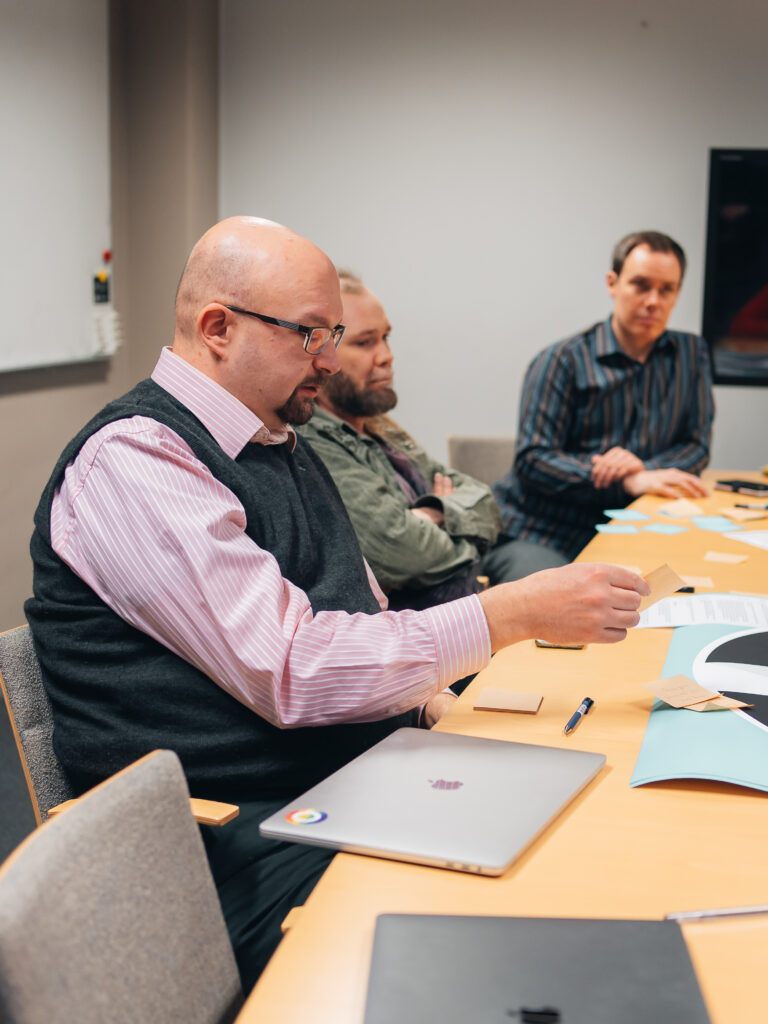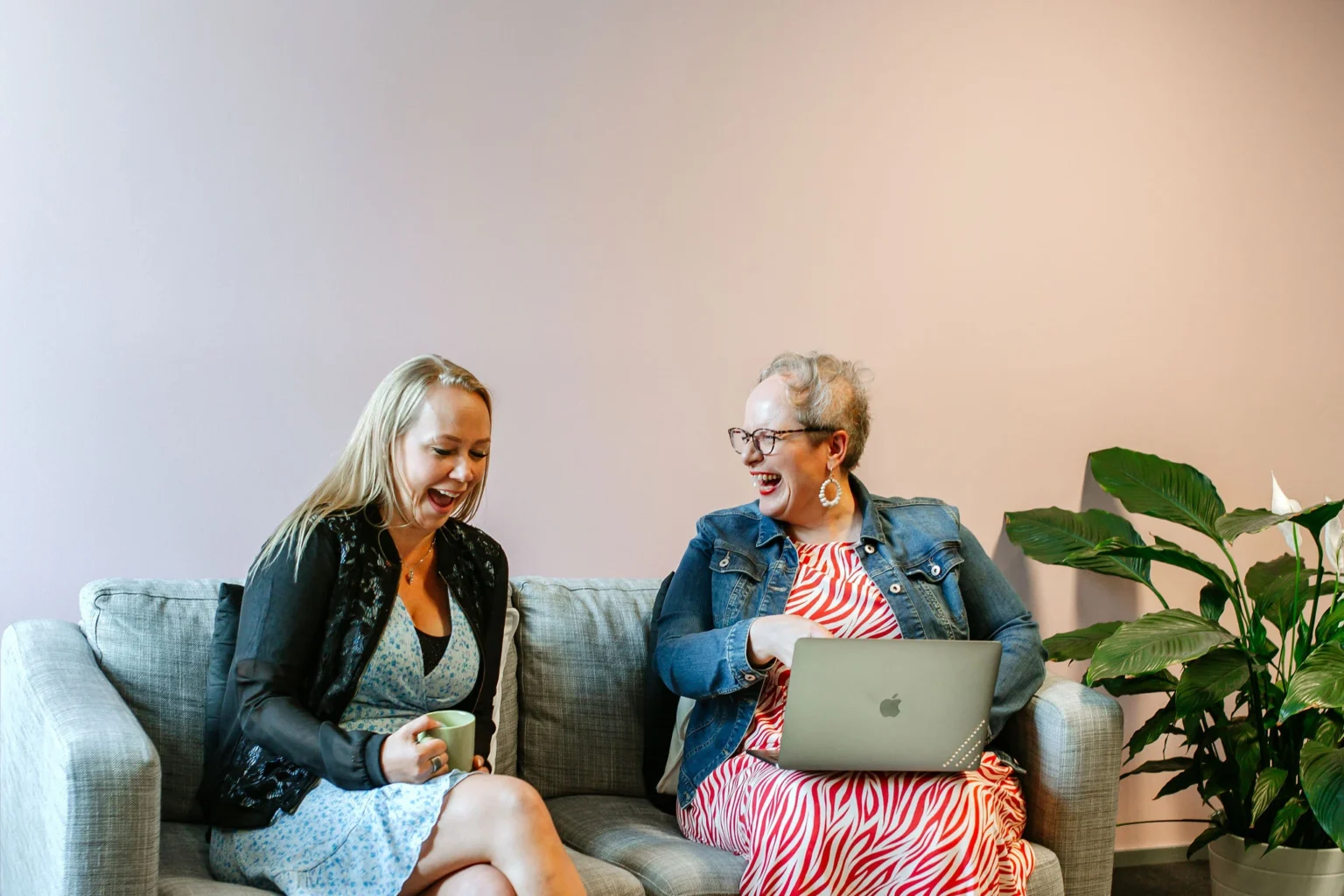What got exovians interested in digital accessibility?
At Exove, accessibility is more than compliance with legal articles and regulations. We have genuine interest and desire to create easy-to-use online services for everyone. Regardless of the individual’s abilities and characteristics. Accessibility is present in the daily lives of Exovians of all titles and seniority levels. That is why we asked some of the Exovians to tell us what got them interested in digital accessibility.
Accessibility and caring about people are interlinked
Some have become interested in accessibility through their own personal experiences and the experiences of those close to them. As described by Koray and a person working at Exove as a Senior developer:
“In 2019 when I had my first child, I was so surprised how entering cafes, shops and restaurants became so difficult, sometimes it was not possible to get inside alone without someone’s help and sometimes I simply couldn’t take the baby stroller. That was the first time I experienced some kind of challenges that a disabled person might have daily. That made me wonder if I had some sort of disability and how life can be so difficult. That was the time I got interested in accessibility also for the web and back then I was studying at a full-time web development course in Helsinki and my classmate Xurxe Toivo García was so passionate about web accessibility, her passion and presentations made me even more interested in the topic.” – Koray, Frontend Developer
“I first encountered this when I watched my grandmother, who had lost her sight, try to operate the computer using Windows utilities available at the time, such as the magnifying glass. Even a simple operation proved to be a very difficult and time-consuming operation, and I could not even help her with those programs, as I had no experience with them. Later on, my workplace organized accessibility training (this was sometime around 2008, when it was not very well known in the web industry). At this point I already knew what was involved, and I became more interested in taking accessibility issues into account when building websites.” – Senior Developer
For others, their interest in accessibility was sparked when they came into contact with a person who needed accessibility and who was not previously known to them. As Heikki and Pauliina tell us:
“I first became interested in accessibility while studying journalism at Oulu University of Applied Sciences. I was doing an article about a visually impaired person and their everyday life. As part of the article, I visited them and during the evening I learned how they use a computer, among other things. Watching how a person who is almost completely blind manages to browse various websites, it sparked my own interest in how to improve the accessibility of the websites. At this stage, there had been little focus on website accessibility and although the WCAG criteria were already in place, apart from the alt texts on the images, there was little awareness or adherence to them. Even the alt texts on images were more for the purpose of preventing a broken image icon from appearing on the page, rather than for screen readers. Since then, accessibility has become more and more of an interest and has become a major part of all the development I do in my work today.” – Heikki, Senior Developer
“The first contact with accessibility came around 2008, when the trend was for flyspeck-sized text on websites and there was little awareness of accessibility in the web industry. A client asked if something could be done to make the links in their e-learning platform easier to click. They said that they suffered from motor disorders, which made it difficult to click on the links using the mouse. This case was particularly memorable and sparked my interest in the subject.” – Pauliina, Senior Developer
And for some, the interest was maybe a bit more through accessibility work in general. As Kalle and Sanna tell us:

“My accessibility awareness started rising along with the projects I was assigned to, namely some public sector projects which already required WCAG 2.0 AA levels of accessibility back in the day. The interest was purely professional in the beginning but quite quickly I became aware of the true meaning and purpose of making stuff accessible: including all people as potential users, not just the ones with perfect abilities in motor function or senses (or other excluding factors such as cognitive factors). This motivated me further in my learning path.” – Kalle, Senior Developer – Technical Competence Manager
“I had been aware of accessibility and its importance for a long time, but my real accessibility spark was ignited when I was able to set up an accessibility team with colleagues at my previous job after a long struggle. We were able to carry out accessibility audits and define the company’s own accessibility policies. This success sparked a wider study of accessibility, and as a result my eyes have been opened to my own accessibility needs. This in turn has motivated me even more and in the last few years I have been actively promoting accessibility both in my work and in my free time.” – Sanna, Senior Developer – Technical Competence Manager, IAAP WAS
The path to accessibility can be very different for everyone. But the answers highlight the understanding of the importance of accessibility through people. The closer you see the impact of, especially the lack of accessibility, the easier it is to start caring about the topic. And this, for its part, is part of the message of accessibility. Accessibility is all about the quality of life for real people.
Accessibility guild helps to spread knowledge inside Exove
Exove has an accessibility guild. The activities of the guild involve employees from the company’s various production units. The guild has many important tasks. The guild focuses on spreading knowledge of accessibility. The guild also handles training the company personnel on the areas of accessibility. The guild doesn’t only focus on the WCAG criteria. The guild goes beyond that and thinks about accessibility in the user experience of online services more broadly.



